SIGGRAPH 2008: Slow Art

Chair(s):
- Lina Yamaguchi
-
- Stanford University
Location:
Los Angeles, California, United States of America
Dates:
August 11th-15th, 2008
Art Show Overview:
In our digital culture, we can task simultaneously, message instantly, and prototype rapidly, but, in doing so, do we create an oasis for contemplation, or do we fuel a hunger for yet more speed? As technology colors all aspects of our world, we see the inevitable pendular response in campaigns that advocate slowness.
The Italian membership organization Cittaslow’s manifesto defines criteria for slow cities, focusing on improved quality of life. Internationally, people are organizing to protect regional food systems, traditions, and cuisine as part of the Slow Food Movement. There is a return to artisanship and a renewed focus on the local, as opposed to the global.
Throughout time, artists have pioneered the important task of illustrating and preserving humanity. For the SIGGRAPH 2008 art program, we are seeking art and investigations that address our overarching conference themes (Complexity and Accessibility, Future History, Global Responsibility, Impact on Society, and Professional Development and Education) through the filter of Slowness. Some questions we hope to explore are:
• In what ways do new media artists employ the tools of speed to address the issue of slowness?
• How does the speed afforded by technology affect the work we make?
• With the rapid changes in new media, how will these artworks be preserved, and do questions of legacy affect the creative process?
• How can new media art assist in the preservation of cultural diversity?
All submissions will be juried. International works are highly encouraged. All forms of digitally mediated work are eligible, as well as works made in traditional media that comment on technology. Selections will be made according to the following criteria: relevance to the SIGGRAPH 2008 themes, creative use of media, depth of critical exploration, and quality of accompanying artist statement.
Our final exhibition will be a gallery at SIGGRAPH 2008, smaller than in past years. In addition, there will be an exhibition of curated artworks. Through both of these exhibits, we hope to showcase the strongest examples of current new media work.
Committee(s):
- Sue Gollifer
-
- University of Brighton
- ISEA International Headquarters
- Lorna Goulden
- Mona Kasra
-
- University of Virginia
- Susanne Seitinger
- Gemma Shusterman
-
- AtomicBee
- Victoria Szabo
-
- Duke University
- Jana Whittington
-
- Purdue University, Calumet
- Mona Kasra
-
- University of Virginia
General Committee:
Additional Committees:
Art Show Jury:
- Gerfried Stocker
-
- Ars Electronica
Art Show Reviewers:
- Mark Allen
-
- Pomona College
- Caitlin Berrigan
-
- Massachusetts Institute of Technology
- Wafaa Bilal
-
- School of the Art Institute of Chicago
- Jinny HyeJin Choo
-
- Seoul International Cartoon and Animation Festival
- Dena DeBry
-
- Stanford University
- Cliff Eyland
-
- University of Manitoba
- Sue Gollifer
-
- University of Brighton
- ISEA International Headquarters
- Guy Hoffman
-
- Massachusetts Institute of Technology
- Cat Jones
-
- Electrofringe Festival
- Tammy Knipp
-
- Florida Atlantic University
- Somaya Langley
-
- Australian Network for Art and Technology
- Felipe Lara
-
- Disney Online Studios
- Shawn Lawson
-
- Rensselaer Polytechnic Institute
- Khalida Katz Lockheed
-
- Pratt Institute
- Agua Vista
- Tomoe Moriyama
-
- Museum of Contemporary Art
- University of Tokyo
- Tokyo Museum of Photography
- Marilenis Olivera
-
- Stanford University
- Jin Wan Park
-
- Chung-Ang University
- Gwyan Rhabyt
-
- California State University
- New Media Caucus
- Vibeke Sorensen
-
- University of Buffalo
- Arizona State University
- Mercedes Teixido
-
- Pomona College
- Nicole Vlado
-
- University of Texas at Austin
- Jana Whittington
-
- Purdue University, Calumet
Additional Information:
“FAST. IT’S NOT FOR EVERYONE.”
Two “curries,” Bob and Karolyn Slowsky, promote this tongue-in-cheek slogan for Comcast’s high-speed internet service, but the campaign is indirectly representative of a growing contingent of people who respond unenthusiastically to an increasing pace of a life in which speed daring, quick tips, and microwavable frozen dinners are commonplace. Proponents of The Slow Movement, originating with Slow Food, a response to the fast food industry, are re-examining cities, schools, travel, exercise, sex, and even design, to name just some of the descendant branches. Slow, in many cases, is equated with “bad” or “old.” The Slow Movement seeks to reframe the concept in a positive light, calling our attention to quality, enjoyment, and balance.
Questions inspired by the Slowskys’ campaign (since replaced with a generically modified, turbo-engined rabbit/panther hybrid) are reflected in the explorations of SIGGRAPH 2008’s Slow Art gallery. Showcasing works from 41 artists meditating on fast and slow living within a landscape of technology, the exhibit speaks to environmental issues, future history, leisure as an indispensable component of a well-balanced lifestyle, and the means by which we get from here to there. They share condensed perceptions of time and interrogate the limits of performance, distance, desire, and respire. The Slow Art jury, reviewers, and myself were delighted by the variety and quality of submitted artworks from over 300 artists, and we wish we could have accommodated more.
Thanks to the keen eyes and wisdom of jury and committee member Gemma Shusterman, we are pleased to present the works in themed areas: Erosion, Hybrids, Rhythms, and Traversal. I’d also like to thank jury members Gemma, Lee Arnold, Janeann Dill, Gerfried Stocker, and Victoria Szabo for their acute insights and endurance during the jury process. Additional thanks to Victoria, who also served on the committee, for directing our technology needs and for facilitating the creation of our audio tour. All submitters to this year’s gallery received compelling and thoughtful evaluations from our 22 online reviewers. I was especially moved by the reviewers’ enthusiasm and generosity, evidenced by the quality and length of their commentary.
Thank you also to Slow Art committee members Sue Gollifer and Jana Whittington for their advice, support, and good humor. To our enthusiastic XSVs (ex-student volunteers) Mikki Rose and Camille Trejo. To Rebecca Strzelec, Create Sphere Director, for cocktails and keeping us on track. To Phil Carizzi, Chair of The Studio, for colored pencils and handy iPhone access. To my counterpart Lira Nikolovska, Design & Computation Gallery Chair, for her collaborative spirit and moral support, and to our illustrious administrative assistant, Mona Kasra, for doing everything well and always with a big smile. To all of the SIGGRAPH 2008 committee members and contractors who helped make every aspect of Slow Art happen, with a special shout-out to Jim Clark for his infinite patience. To Kevin Mack for making the wonderful animations that grace the entrance to the gallery. To our sponsors, whose support makes the gallery possible, and last, but not at all least, to the Slow Art artists. Thank you for making this beautiful, fun exhibit, and for reminding people to slow down once in a while.
Lina Yamaguchi
Stanford University“SLOWING ART”
Speed is an implicit element of technological design. In most advanced technologies, faster is often equated with better, often for good reason. Strides in processor speed and bandwidth have given us access to lifesaving data, kept us connected with friends and family on the other side of the world, and enhanced our quality of life in a myriad of ways. Bur we rend to pay little attention to how speed influences the way we live our lives, even as we continually adopt new behaviors and expectations in response to its pressures.
We have altered our sense of time.
Some of us still remember dial-up, bur we find our attention waning when a web page rakes longer than a few seconds to load. Our cars must accelerate from zero to 60 in an unnecessarily short interval, and our news must be delivered with nearly clairvoyant riming. We demand performance from our objects and surroundings, and that demand comes back to us.
We are expected to maintain connections through our tools, and since we are connected, we must respond. We check email, voicemail, and SMS messages with compulsive enthusiasm. Our lives are fixed to the demands of our “rime-saving” devices. Distance has come to be measured by the strength of a cell phone or wifi signal rather than a physical measurement. Space and time have been condensed by our fast-paced lives. As our machines maneuver around the “performance limits” suggested by Moore’s law, they press us to imagine what is analogous for humanity. What limits do we have, need, or indeed want, when it comes to speed? It is with this question in mind that we asked artists to reconsider the paradigm of speed and instead consider the concept of Slow Arr.
The result was quire varied. Some artists chose to delve into the nature of their surroundings and investigate erosion and the effects of time. Others chose to work with materials that evoke a sense of nostalgia bur connect them to contemporary concepts or objects, creating hybrids that highlight the momentum in our culture and its artifacts. Some draw our attention to the sensory realm, playing with rhythm and space-rime patterns, vividly layering time and space. Others focus on a traversal of space over time. All of these works ask us to step out of the fast lane and consider the possibilities when speed is nor an exigent force.
The concept of “slow” is gaining momentum in some areas of human culture. It has even spawned movements. “Slow food” and the popularity of yoga and meditation point to a public need for respire from our speed-driven culture. In the Slow Art gallery the interpretations are quire personal. Whether procedural or literal, material or conceptual, the works consider the component of life that is always in short supply: time.
Gemma Shusterman
AtomicBee
Exhibition Artworks:
-
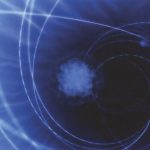
2006.7 (Elemental Series)
[Kenneth A. Huff]
Categories: [Animation & Video] -

Associative Audio Design
[Dennis de Bel]
Categories: [3D & Sculpture] -
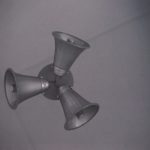
Chorus
[Paul Magee]
Categories: [Installation] -
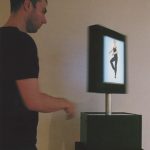
Cross-Being: Dancer (The Spinning Screen...
[Hyun Jean Lee] [Ali Mazalek]
Categories: [Interactive & Monitor-Based] -

Dark Days - New York
[Gabriele Peters]
Categories: [2D & Wall-Hung] -
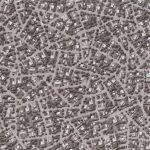
Digital Drawings
[Ross Racine]
Categories: [2D & Wall-Hung] -
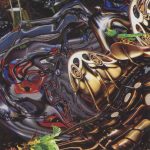
Divine Instruments of Technology
[Kevin Mack]
Categories: [2D & Wall-Hung] -
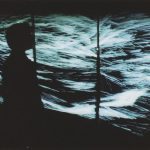
Echo Locations
[Carlos Guedes] [Kirk Woolford]
Categories: [Installation] -
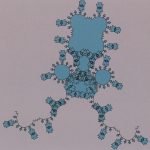
FF-
[David Gladstein]
Categories: [Animation & Video] -
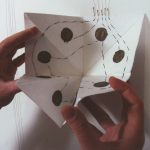
Fold Loud
[Joo Youn Paek]
Categories: [Interactive & Monitor-Based] -
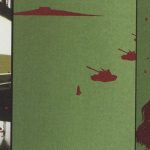
Forbidden City
[Lily & Honglei]
Categories: [Animation & Video] -

fragment.0140.02b (‘Silhouette’) fra...
[Tim Borgmann]
Categories: [2D & Wall-Hung] -
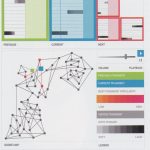
Graph Theory
[Jason Freeman]
Categories: [Design] -

Infinity
[Jing Zhou]
Categories: [2D & Wall-Hung] -

Japan Media Arts Festival
[Aoki Tamotsu]
Categories: [Animation & Video] -
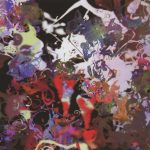
Kashikokimono
[Takahiro Hayakawa]
Categories: [Animation & Video] -
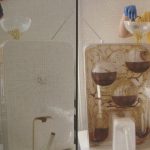
Life and Death of Energy- Autonomous Dev...
[Anab Jain] [Alex S. Taylor]
Categories: [Installation] -

Meros: Remapping Experiences of Light in...
[Dylan Moore]
Categories: [Animation & Video] -
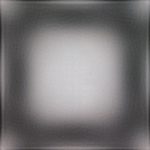
Migrations
[Shawn Lawson]
Categories: [Animation & Video] -
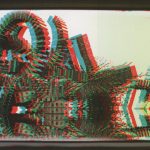
Moving Still
[Santiago Caicedo]
Categories: [Animation & Video] -
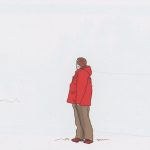
Navigator
[Jorn Ebner]
Categories: [Animation & Video] -
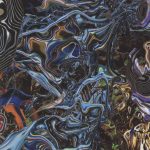
Neurosymphonic Self Reflection
[Kevin Mack]
Categories: [2D & Wall-Hung] -
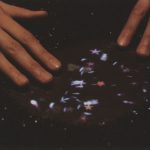
Oasis: Tangible Visual Interface
[Hyunwoo Bang] [Yunsil Heo]
Categories: [Electronic/Robotic Object] [Interactive & Monitor-Based] -
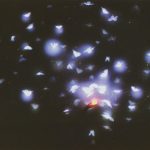
Phantasm
[Takahiro Matsuo]
Categories: [Installation] -
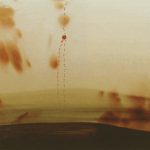
Prelude
[Qiao Lin]
Categories: [Animation & Video] -
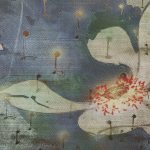
Purity
[Jing Zhou]
Categories: [2D & Wall-Hung] -
![RealSnailMail [RSM]](https://digitalartarchive.siggraph.org/wp-content/uploads/2018/03/2008_boredomresearch_RealSnailMail-150x150.jpg)
RealSnailMail [RSM]
[boredomresearch]
Categories: [3D & Sculpture] -
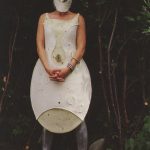
SKORPIONS: Kinetic Electronic Garments
[Joanna Maria Berzowska] [Di Mainstone]
Categories: [3D & Sculpture] -

Smoke Water Fire
[Mark J. Stock]
Categories: [Animation & Video] -

Solargrafica
[Andreas Zingerle]
Categories: [Installation] -
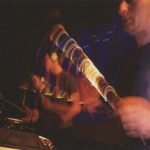
Spacequatica
[Ed Cookson] [Edd Dawson-Taylor]
Categories: [Animation & Video] -
![S[tr]eam](https://digitalartarchive.siggraph.org/wp-content/uploads/2018/03/2008_FontanillaGoldschmidt_Stream-150x150.jpg)
S[tr]eam
[Edrex Fontanilla]
Categories: [Animation & Video] -

Televisor 1910 German
[Steve Gompf]
Categories: [3D & Sculpture] -
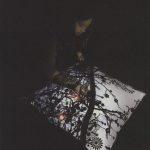
The Dreaming Pillow (L’Oreiller Rêveu...
[Armella Leung] [Olivier Oswald]
Categories: [Interactive & Monitor-Based] -

The Intimacy Machine
[Jonathan Bachrach]
Categories: [Electronic/Robotic Object] [Interactive & Monitor-Based] -
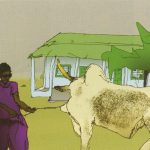
The Mischief of Created Things
[Aaron Oldenburg]
Categories: [Interactive & Monitor-Based] -
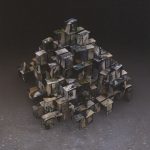
The Verge
[Greg Shirah]
Categories: [2D & Wall-Hung] -
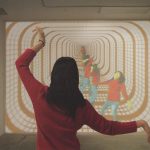
Through The Time Tunnel
[Miseong Lee] [Tek-Jin Nam]
Categories: [Interactive & Monitor-Based] -
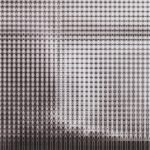
Tiled Faces
[Nathan Selikoff]
Categories: [Interactive & Monitor-Based] -
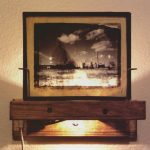
TimeFrames: Digital Magic Lantern Slides
[Wil Lindsay]
Categories: [3D & Sculpture] -
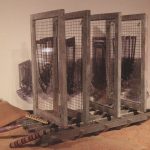
VR Comper ver. 5E: A Perspective Primer
[Theo. A. Artz]
Categories: [3D & Sculpture] -
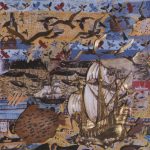
Water Planet
[Ana Z. Ursyn]
Categories: [2D & Wall-Hung] -
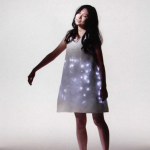
Wearable Forest: Feeling of Belonging to...
[Hill Hiroki Kobayashi] [Ryoko Ueoka]
Categories: [Installation] [Sound Art] -
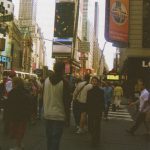
Wonderland
[Hye Yeon Nam]
Categories: [Animation & Video]
Exhibition Writings and Presentations:
-
Title:
Associative Audio Design
Author(s):
Category: Sketch / Art Talk
Title: Meros
Author(s):
Category: Sketch / Art Talk
Title: RealSnailMail [RSM]
Author(s):
Category: Sketch / Art Talk
Title: Skorpions
Author(s):
Category: Sketch / Art Talk
Abstract Summary:
SKORPIONS are a collection of kinetic electronic garments that use the shape-memory alloy Nitinol to move and change on the body in slow, organic motions. They have anthropomorphic qualities and can be imagined as parasites that inhabit the skin of the host. They breathe and pulse, controlled by their own internal programming. They are living behavioral kinetic sculptures that exploit characteristics such as control, anticipation, and unpredictability.
SKORPIONS integrate electronic fabrics, soft electronic circuits, specially designed circuit boards, Nitinol, mechanical actuators such as magnets, and traditional textile construction technique. The cut of the pattern, the seams, and other construction details become an important component of engineering design. SKORPIONS are not interactive: their programming does not respond to sensor data. SKORPIONS shift and modulate personal and social space by imposing physical constraints on the body. They alter behavior, by hiding or revealing hidden layers, inviting others inside the protective shells of fabric, by erecting breathable walls, or tearing themselves open to divulge hidden secrets.
Title: Spacequatica
Author(s):
Category: Sketch / Art Talk
Title: The Life and Death of Energy-Autonomous Objects
Author(s):
Category: Sketch / Art Talk
Title: Water Planet
Author(s):
Category: Sketch / Art Talk
Title: Wonderland
Author(s):
Category: Sketch / Art Talk




